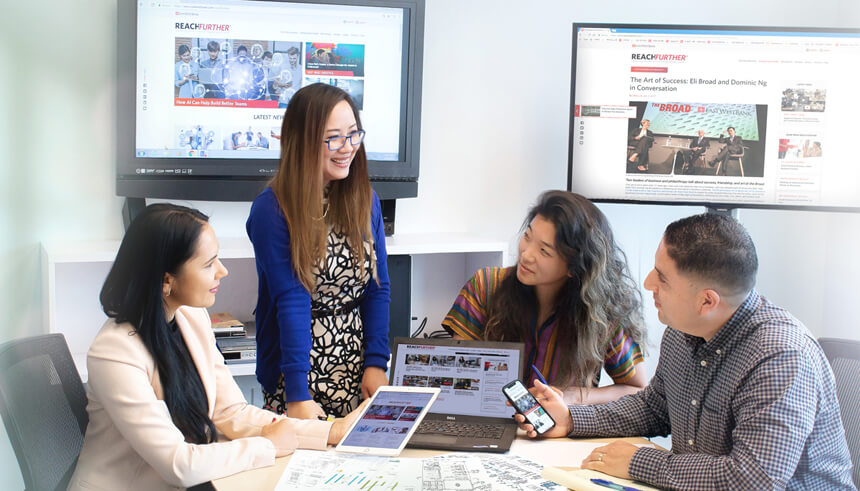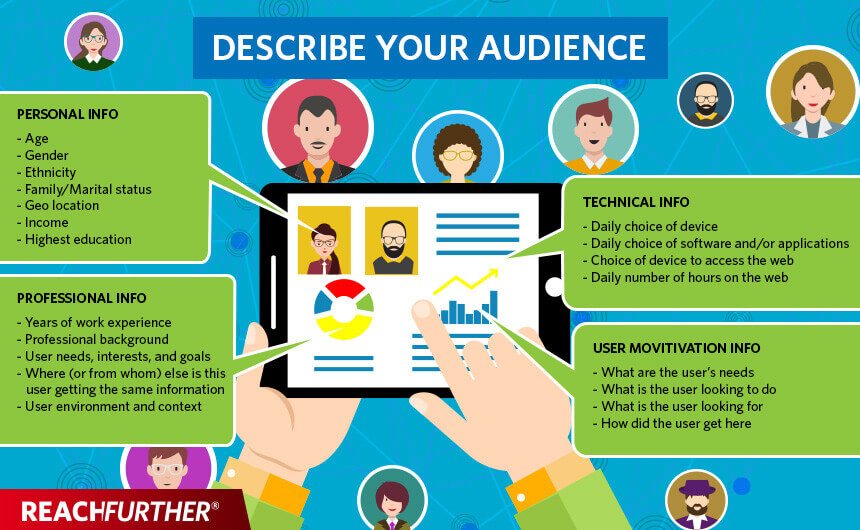Entrepreneur Insight
Tech Talks: Getting the Best Results from a Website Redesign
By Mindy Duong

East West Bank’s vice president of Web Design blogs about maximizing investment on your business website.
Congratulations! Business is thriving, but you want to improve your company’s online presence. You have the money to invest in redesigning your website, but you can’t help but wonder: Where do I start? How will it be maintained? Is it scalable? What are the ongoing costs? How will I know if the investment was worth it?
Redesigning a website can be the worst nightmare and the biggest waste of money—but it also can become the most effective marketing tool at your disposal. This is a good opportunity for businesses to reposition their brands, to improve rankings, and to figure out how to maintain a site in the most cost-effective and efficient way.
Case study
When East West Bank redesigned its business news site, Reach Further, the team identified a number of key pain points to overcome that addressed not only the front end of the website but also the back end. The new look and feel adopts a “simplexity” design, a combination of simple design with complex algorithms in the back. In January of 2018, we had a successful redesign launch, built a great “content management system (CMS)” for daily maintenance, and put efficient processes in place. Since then, we’ve seen our page views grow exponentially.
So how do you improve return on investment (ROI) before and after redesigning a website?
Start with data research
Most people think of the aesthetics when they think of “redesign” because “design” tends to throw people off. Sure, a business should want a design that is worthy of its brand, but, ultimately, the goal is for the website to have an ROI, whether it’s quantifiable or qualitative results—preferably both.
Quantifiable
If the goal is to increase subscribers, visitors, or ranking in search engines, these are all quantifiable results that can be benchmarked in the “research” phase of the redesign project. It’s all about numbers. Run a website analysis first, then shape the design and project to meet the data objectives.
Qualitative
If the goal is to give users a satisfying user experience flipping through your beautifully crafted pages—because they were developed especially for the targeted audience in mind—then these are all qualitative results that can be discovered through social media, word-of-mouth, mentions on other websites, etc.
It boils down to data. Before redesigning your website, get a grasp on that data. Live, eat, and breathe the data. Understand the website viewers, customer base, and website numbers. From that knowledge, mastermind the redesign through purposeful layouts and code with targeted intent. Here is a starter list of questions you will want to know about your users.


~ Personal Info ~
- Age
- Gender
- Ethnicity
- Family/Marital status
- Geo location
- Income
- Highest education
~ Professional Info ~
- Years of work experience
- Professional background
- User needs, interests, and goals
- Where (or from whom) else is this user getting the same information
- User environment and context
~ Technical Info ~
- Daily choice of device
- Daily choice of software and/or applications
- Choice of device to access the web
- Daily number of hours on the web
~ User Motivation Info ~
- What are the user's needs
- What is the user looking to do
- What is the user looking for
- How did the user get here
Insist on scalability for maximum ROI
Redesigning your website is much like changing to a healthy lifestyle: a person can look great on the outside and feel great on the inside, but if he or she can’t efficiently maintain it or make future improvements, all that hard work would be in vain.
Technology changes at such a fast pace that it seems we are always just trying to catch up. Keeping a website updated at all times is just that—catching up. It’s forever changing and adapting.
It’s more important than ever to create a scalable website to make life easier and more efficient for future changes should it need upgrades or another redesign later on. Some websites are developed in a way that makes it very hard to add improvements or changes such as new sections, new functionality, etc. That results in scrapping the whole site altogether and rebuilding from scratch, wasting a lot of valuable time, resources, and money. If your current website is not scalable, this is definitely the perfect time for a redesign to make it scalable. Scalability can apply to multiple facets of a website creation, from search engine optimization (SEO), to coding the CMS and website. So if someone asks you to be more specific...tell them: I want to establish a website foundation with the potential to easily accommodate for growth in size or to scale in the future in both design and function.
You will sound like a website guru and all you are saying is, "I want everything scalable." It’s not greedy to want it all. However, if you can’t get all you want, at least fight for ownership of your website content—it should not need a designer or developer to update content.
Monitor data
In order to improve ROI before redesigning, it is imperative to understand the customer base by looking at data. Data research will affect design, development, content and SEO, which in turn will save time and money on the project itself.
Improving ROI after the redesign and launch involves the upkeep of the website and its content. Keep everything fresh and new, and monitor data like a hawk for the first couple months to see if you’ve reached your benchmarks. If the numbers are going up slowly, don’t be discouraged: It’s a good sign that your ROI is working.
If you have questions about this article or if there is a topic related to website design and development that you would like us to cover, please email us at reachfurther@eastwestbank.com.
Sign up for the Reach Further Newsletter
We’ll keep you in the know about the latest US-Asia business news and trends.
Suscríbase al boletín Reach Further
Lo mantendremos informado sobre las últimas noticias y tendencias comerciales entre Estados Unidos y China.

